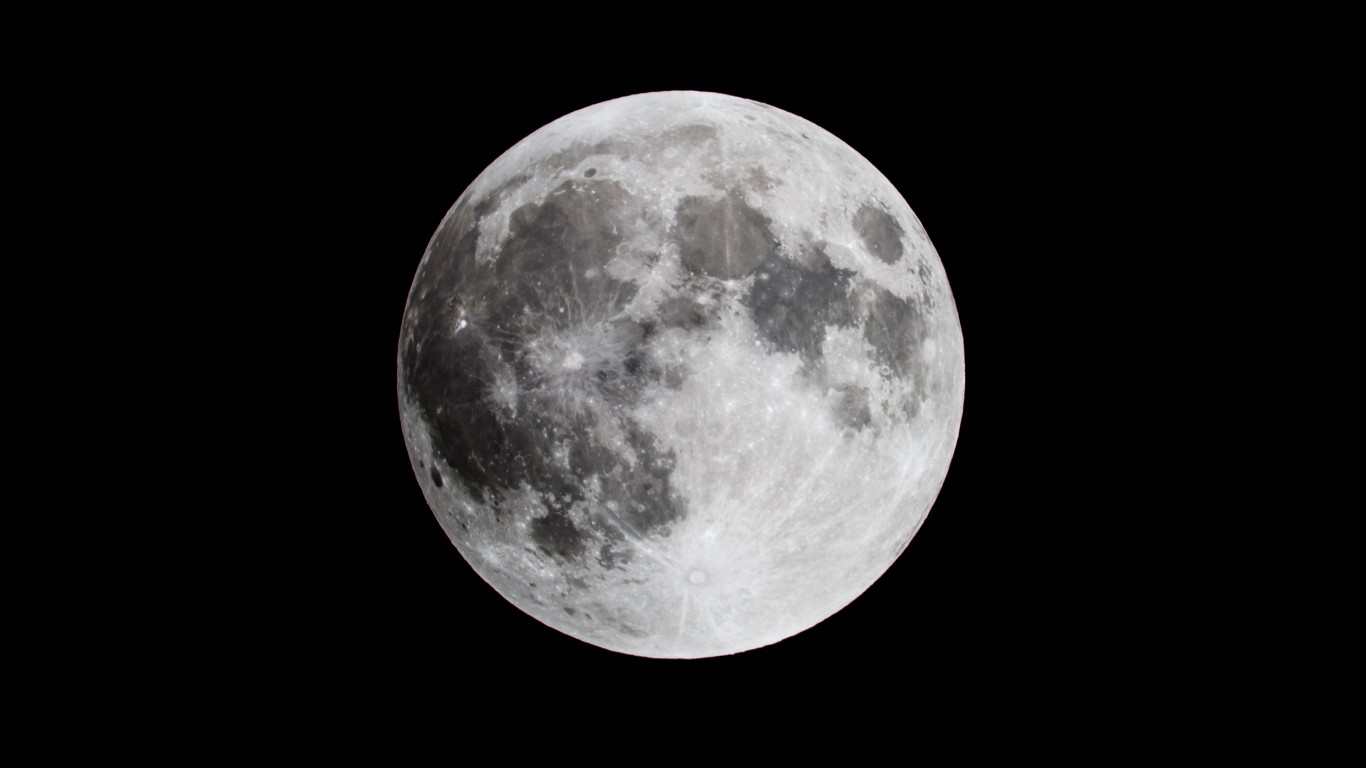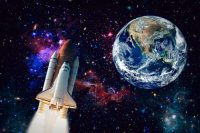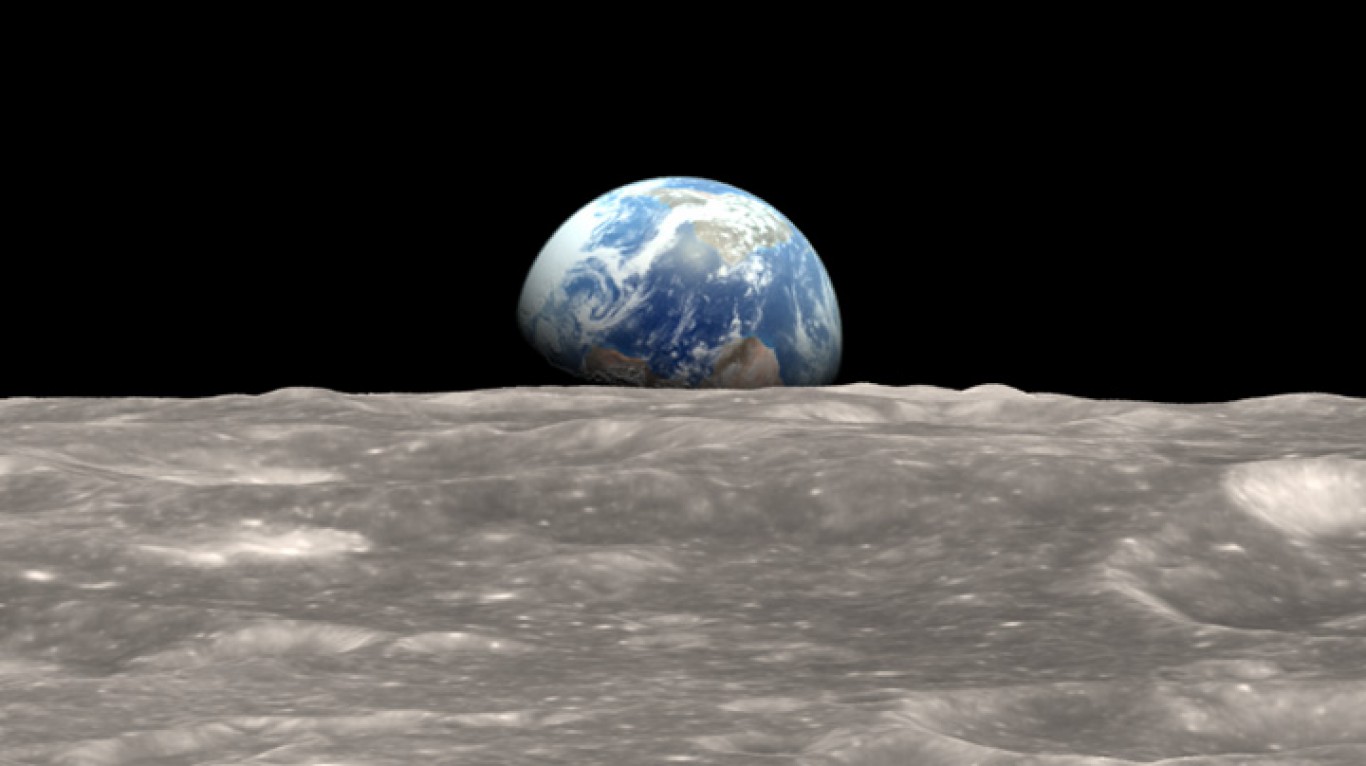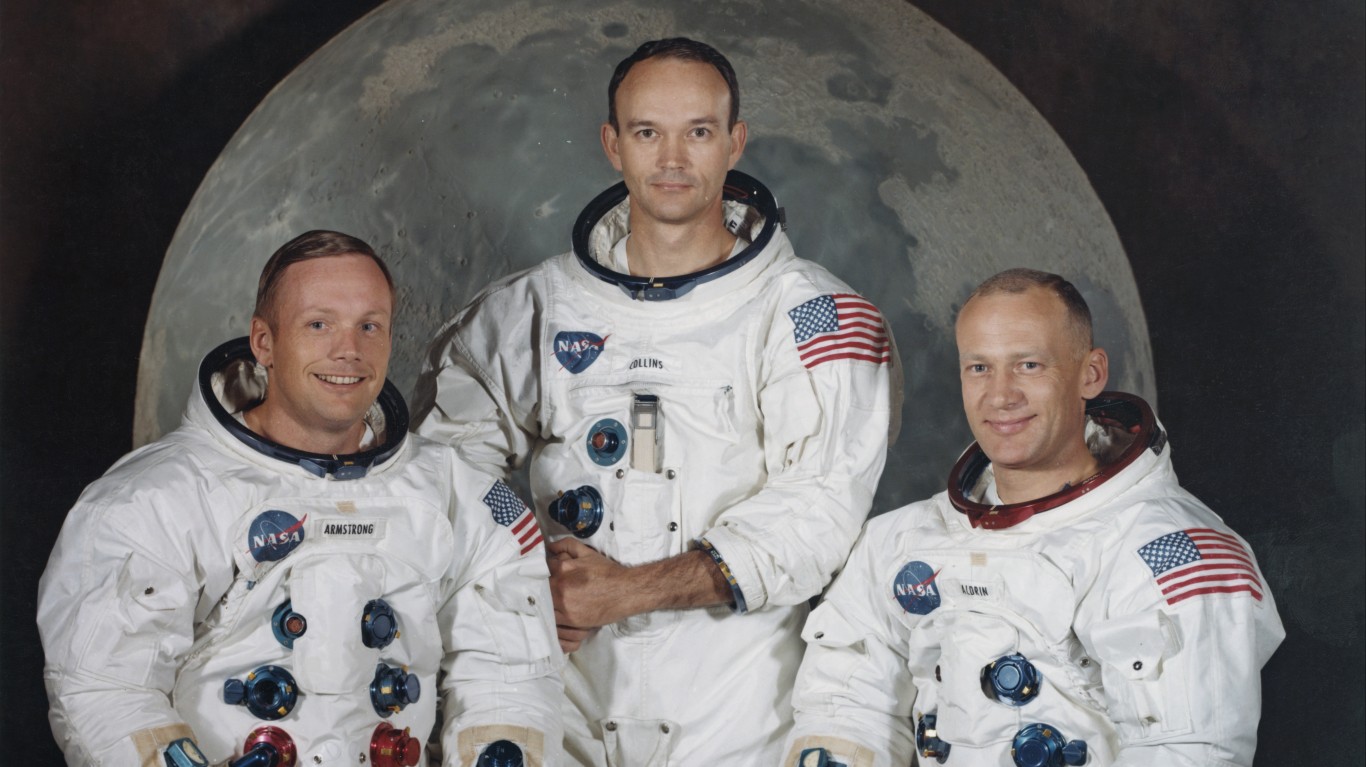
There are a lot of costs associated with space exploration. The one that could come to your mind first might be the astronauts’ salaries, or the other engineer’s or mission control’s take-home pay. As you can see from this article, there are many different costs associated with the first manned mission to the moon in 1969. You might not think that the spacecraft costs include life support equipment, food, seats, water, sleeping bunks, and more, but it does! And those costs add up. This article will broadly scratch the surface of the costs of the Apollo Program.
Why Are We Talking About This?
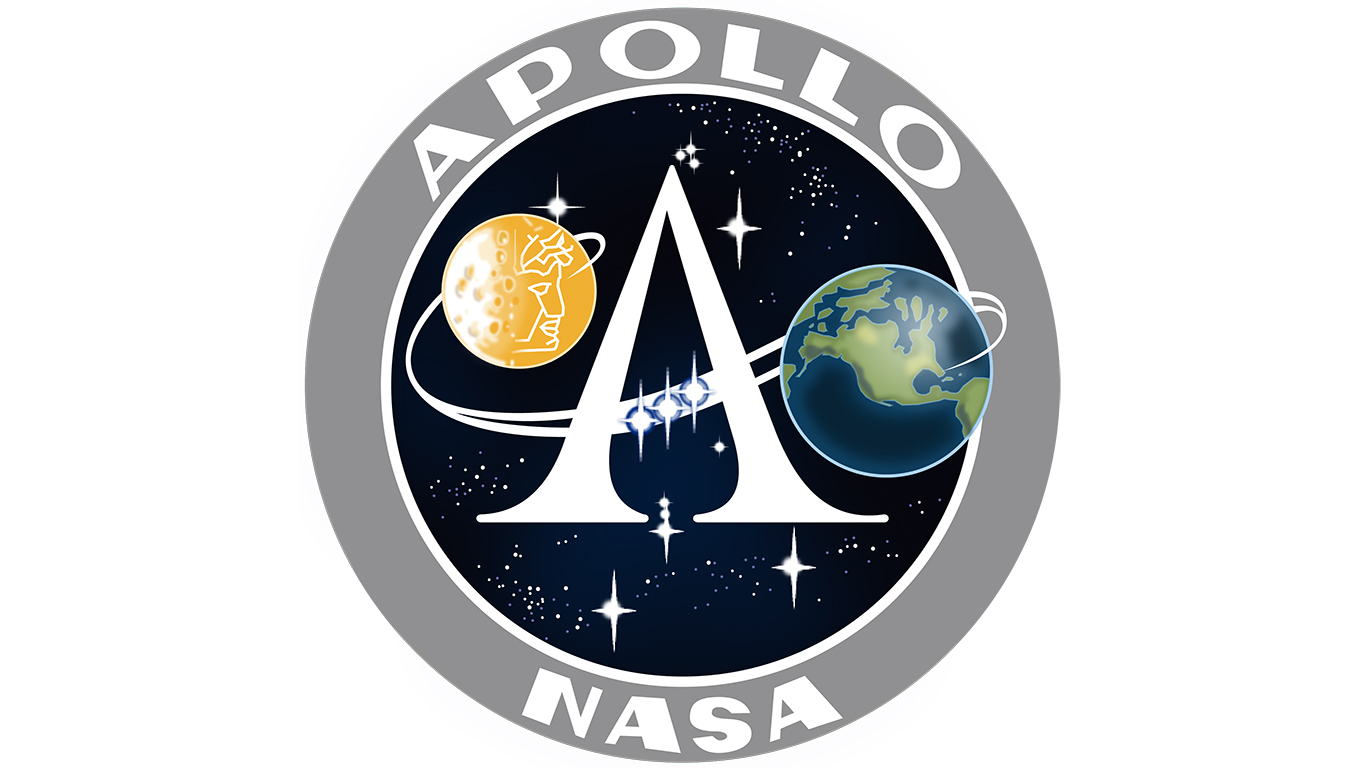
There is a lot of talk about government budgets, wasteful spending, and finding money for worthwhile government projects these days, especially during election season. Inflation and misinformation tend to warp our sense of how much our government spends on everything. Sometimes it’s helpful to step back and look at how much it costs to achieve greatness.
#1 The Apollo Program
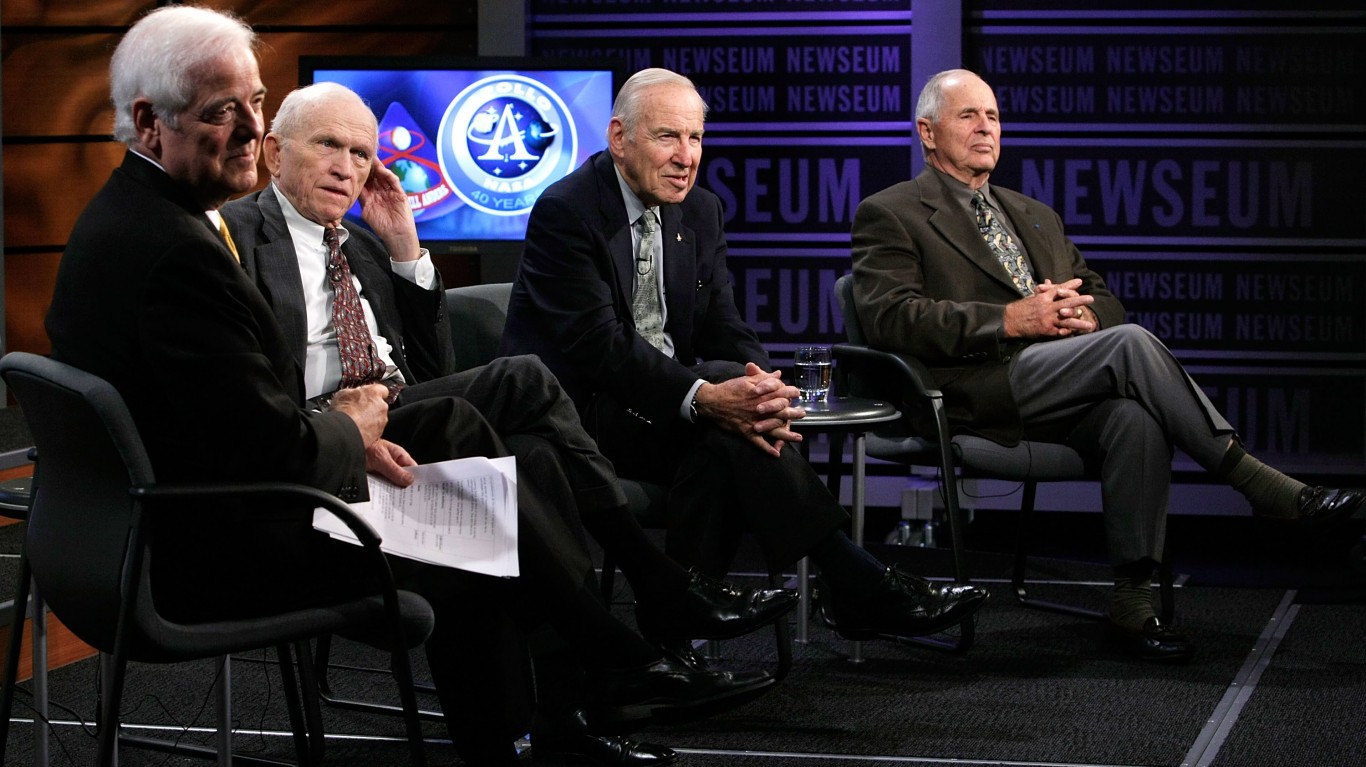
The program launched 11 total spacecraft. Six of those eleven landed humans on the moon, and 12 astronauts walked or drove on the moon’s surface. Samples taken from this time period are still being used in research projects today.
The Apollo Program had 4 goals, according to NASA: “1. Establishing the technology to meet other national interests in space. 2. Achieving preeminence in space for the United States. 3. Carrying out a program of scientific exploration of the Moon 4. Developing human capability to work in the lunar environment.”
When the two astronauts, Neil Armstrong and Buzz Aldrin spent time on the moon, they planted an American flag, set up science experiments, and collected samples. Something to note is that although they planted a flag, they didn’t claim the land for the United States. This was a signal that the moon belongs to everyone, not just the United States.
#2 The Apollo Project Budget
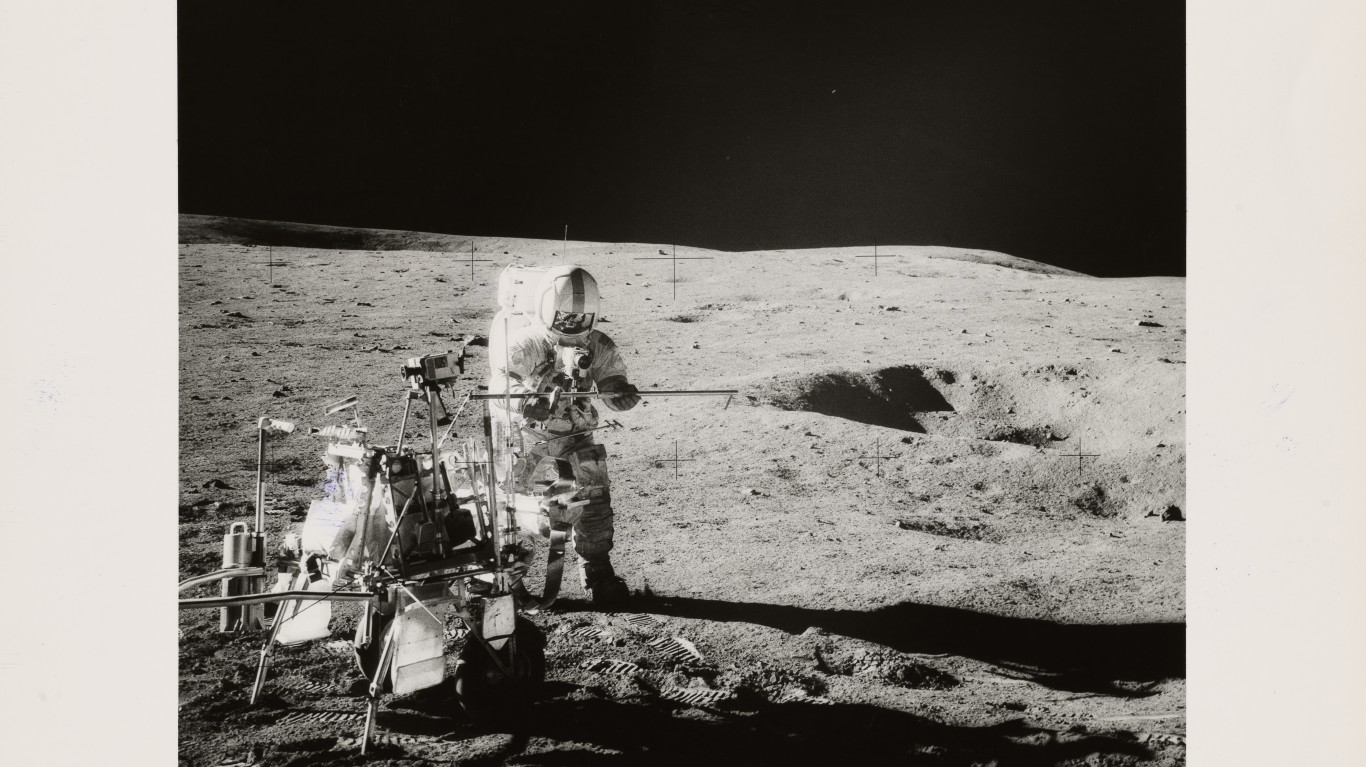
- Actual: $25.8 billion
- Inflation Adjusted: $257 billion
The Apollo project was from 1960–1973 and was a global victory. While there were previous humans in space, this was the first time that humans stepped foot on the Moon. The crowning moment of the project was when Neil Armstrong, Edwin “Buzz” Aldrin, Jr, and Michael Collins landed on the Moon on July 20, 1969. It was the result of years and years of engineering, innovation, work, and global pressure.
The Apollo Program was initiated by President John F. Kennedy during the space race to discover better technology than the Soviet Union. Televised globally, over 650 million viewers watched together as humanity walked on the Moon. Although unsustainable, the U.S. didn’t blink an eye at the $25 billion in 1969 USD that was spent on the Apollo Program. The Apollo Program employed over 500,000 people.
#3 The Spacecraft

- Actual: $8.1 billion
- Inflation Adjusted: $81 billion
The Apollo Command Module, Columbia, was less of a rocket and more of a three-person capsule, with the interior about the size of a car. It had three parts: The command center, the Service Module, and the Lunar Module, Eagle. The Command Module (CM) is where the flight control section and the crew’s quarters are housed. NASA spent $3.8 billion ($32.5 billion USD in 2024) on the CSM, which is the CM and SM together.
The Service Module (SM) held the spacecraft support systems and the propulsion systems. The Lunar Module (LM) was detached to take two people to the surface of the moon and then return them to Apollo 11 in lunar orbit. NASA spent $2.4 billion ($20.5 billion USD in 2024) on the Lunar Module. Part of the Lunar Module stayed behind on the moon, in order to propel the crew back to the main capsule.
Neil Armstrong had to manually pilot the LM, narrowly avoiding the rim of a crater. He was able to land the LM 6 km away from the original landing site target. The iconic classic words from Neil Armstrong, “This is one small step for a man, one giant leap for mankind,” were uttered as he dropped the 3 ½ feet from the foot of the ladder to the surface of the moon. The pair spend about two and a half hours on the moon before returning to the Columbia. Returning to Earth, the crew splashed down near Hawaii on July 24, 1969, in the capsule.
The world was captivated as the astronauts left the spacecraft and explored the moon. Pink Floyd played, “Moonhead,” during the live television coverage, over a million people watched the lift-off in person, the world held its breath, millions looked towards the moon while listening to the updates via radio, and the Soviet Union even tried to jam Voice of America radio broadcasts.
#4 The Launch Vehicles
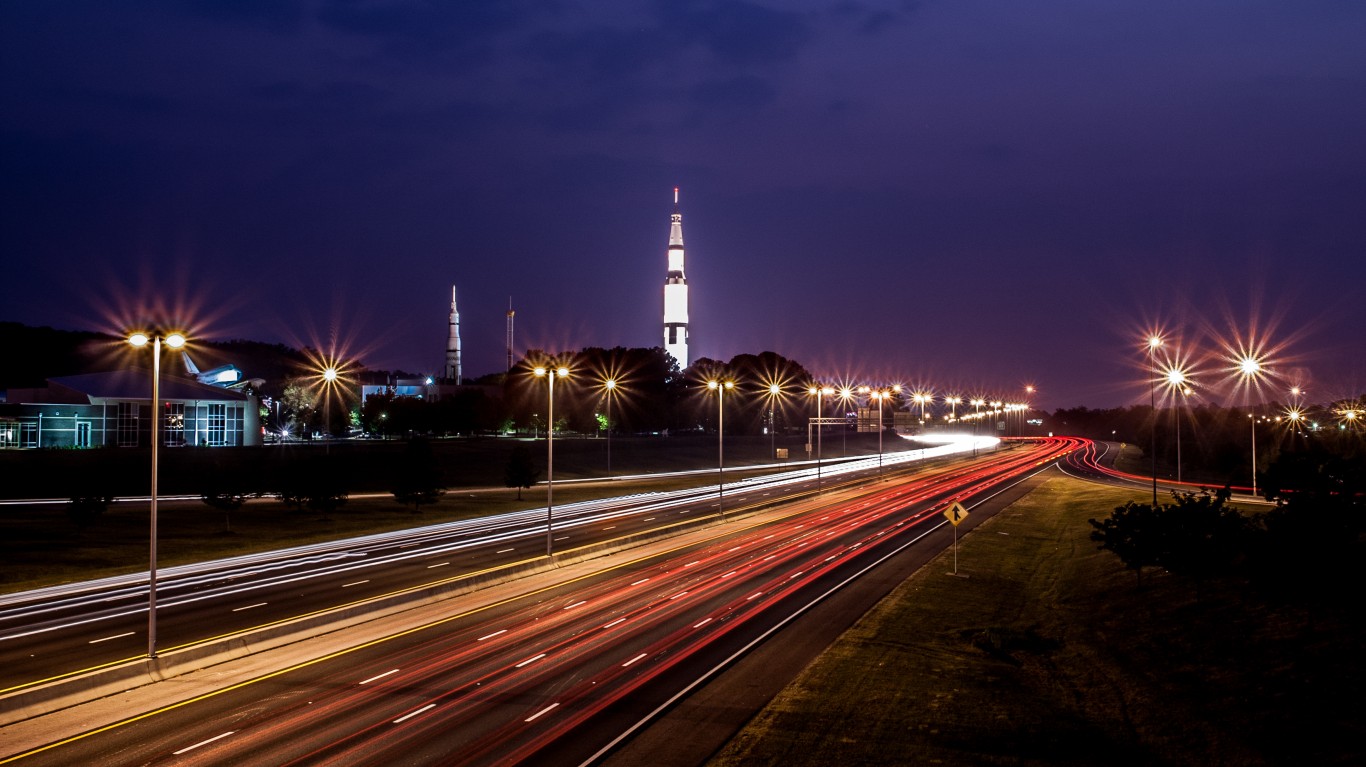
- Actual: $9.4 billion
- Inflation Adjusted: $96 billion
The Saturn V rocket that launched Apollo 11 into space was 363 feet (111 meters) high. It weighed 6,698,700 pounds. When President Kennedy promised the world that the U.S. would put a man on the moon by the end of the decade, the rocket required didn’t yet exist.
The Saturn V was developed under the direction of former Nazi scientist, Wernher von Braun. It is one of the largest launch vehicles ever created and the largest one ever built by the United States. The Saturn family of rockets cost $9.4 billion ($80.5 billion USD2024). The Saturn V alone cost $6.6 billion ($56.5 billion).
The Saturn V rocket had 3 stages and an instrument unit. The first stage (bottom section) was 58 feet tall and had five engines. The second stage (middle section) was 81 feet high and also had five engines, the third stage (top portion, which sits under the instrument unit) was 59.3 feet and had one engine. The instrument unit was 138 feet high. The Saturn V rockets were used 11 times, including for later Skylab missions.
Armstrong said about Saturn V, “This Saturn gave us a magnificent ride…It was beautiful!”
#5 Development and Operations

- Actual: $3.1 billion
- Inflation Adjusted: $26 billion
Development refers to the development of all of the equipment used such as the Saturn V, Apollo models, and Lunar Roving Vehicles. There are also a lot of operation costs that go into launching rockets. Operations refers to things like Mission Control, communication infrastructure, contractor and supplies coordination, and astronaut training
Mission Control for the Apollo Project was all on-the-job learning since this hadn’t been done before. The average age of mission control personnel was 28 years old. The flight operations director was Christopher Columbus Kraft, Jr. About his role, he said, “I’m like an orchestra conductor… I don’t write the music; I just make sure it comes out right.
Unlike Mission Control of today, which has windows, large screens, and advanced computer technology, the Mission Control of the Apollo Projects was windowless and had four rows of computer consoles. Engineers at the consoles were monitoring around 1,500 constantly changing data points. There was more software in a flip phone made in 2004 than what launched a rocket in 1969. It is truly amazing what they were able to do with the level of technology that was available at the time.
When you send people to a new frontier, you need to have a way to communicate with them. To solve this program, The Deep Space Network (DSN) was created. The DSN is the world’s largest telecommunications system. It is a network of 3 international giant radio antennas as well as some that orbit the Earth. Besides communication, it provides radio astronomy observations and radar. There are three DSN complexes located near Madrid, Spain; Goldstone, California; and Canberra Australia. The complexes are equidistant from each other to ensure constant communication with spacecraft. Each antenna has a 230-foot diameter and can communicate with spacecraft tens of billions of miles away.
What about navigation? The Apollo Guidance Computer (AGC) was created. It was a digital computer that weighed almost 70 pounds. One was installed on the CM and LM. They were designed at the MIT Instrument Laboratory and used integrated circuits, also known as chips. Integrated Circuit was newly invented. Even though the chip’s reliability was untested and largely unknown. Because of how heavy the computers were, there were no backups, which was unique for this mission, as every aspect of Apollo 11 had a backup.
Ever wonder how testing and simulation took place? All of the spacecraft components were tested in large vacuum chambers, vibration tests, and extreme temperatures at the Space Environment Simulation Laboratory (SESL). It was important that the facility could replicate the thermal and vacuum conditions of space. There were two giant vacuum chambers, with chamber A being the largest measuring 90 feet high and 55 feet wide. It was large enough to test the entire spacecraft. To mimic the temperature of outer space, the walls of the chamber could cool to -230 degrees Fahrenheit. Besides the full spacecraft, the astronauts also tested their spacesuits in Chamber A.
#6 Direct Project Costs
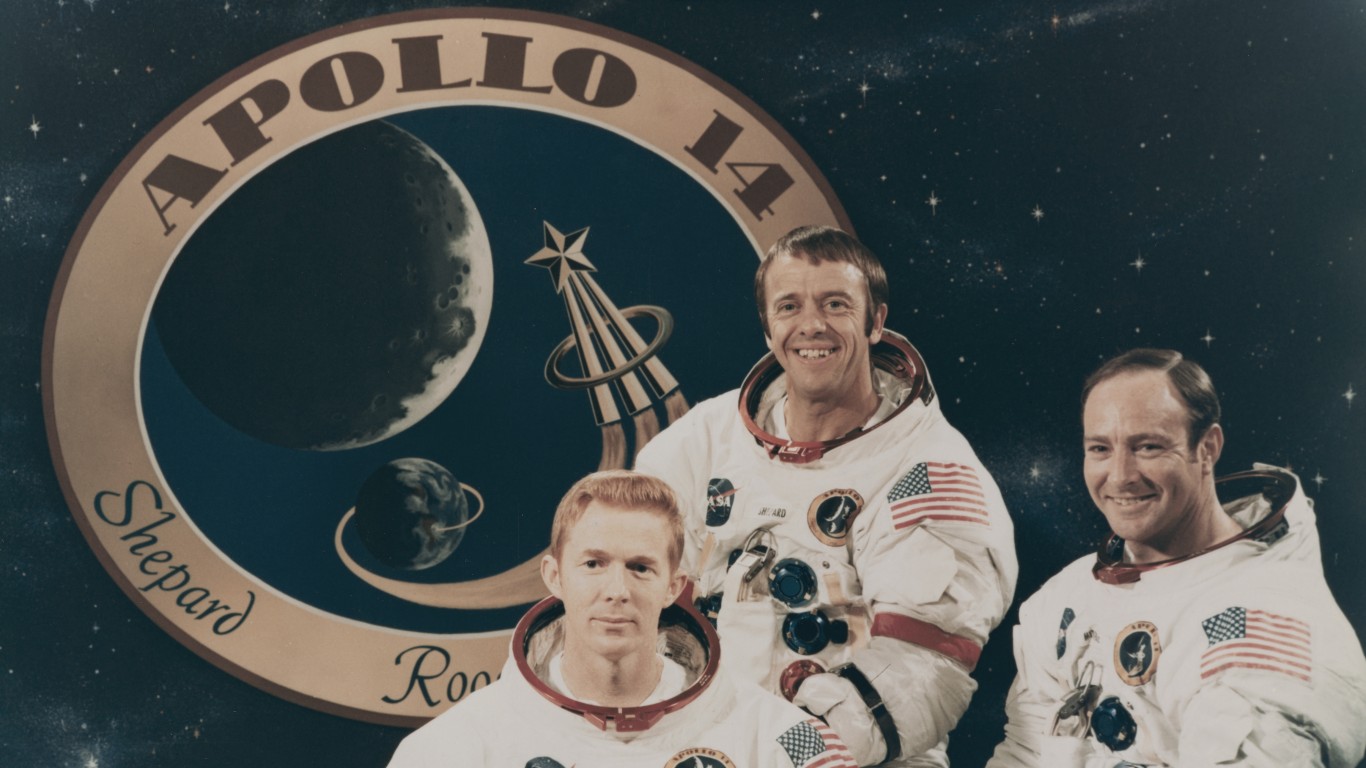
- Actual: $20.6 billion
- Inflation Adjusted: $204 billion
Astronaut training and support is one of the costs associated with Direct Project Costs. Certain things are required to train astronauts. These facilities include flight simulators, zero-gravity simulations, lunar landing simulators, and build muscle memory. Besides the simulators and indoor and classroom training, astronauts had to build muscle memory by entering and exiting the lunar module, collecting specimens, digging trenches, selecting landing sites, properly taking photos, and verbally documenting geological characteristics.
It wasn’t their job to analyze any photographs or samples, but they did need to ensure that they collected the samples properly. They took field trips to different sites so they could learn about different aspects of the geological features of the moon. Some of these field trips were to various locations in Arizona, Texas, Nevada, and Hawaii.
One of the longer training “field trips,” happened in Hawaii at different volcanos. Practicing on Volcanos helped the astronauts observe summit craters, lava vents, pit craters, and gas vents. If you want to experience what they did, you can still go on a 13-mile hike up the Mauna Loa volcano.
#7 Ground Facilities, Salaries, and Overhead
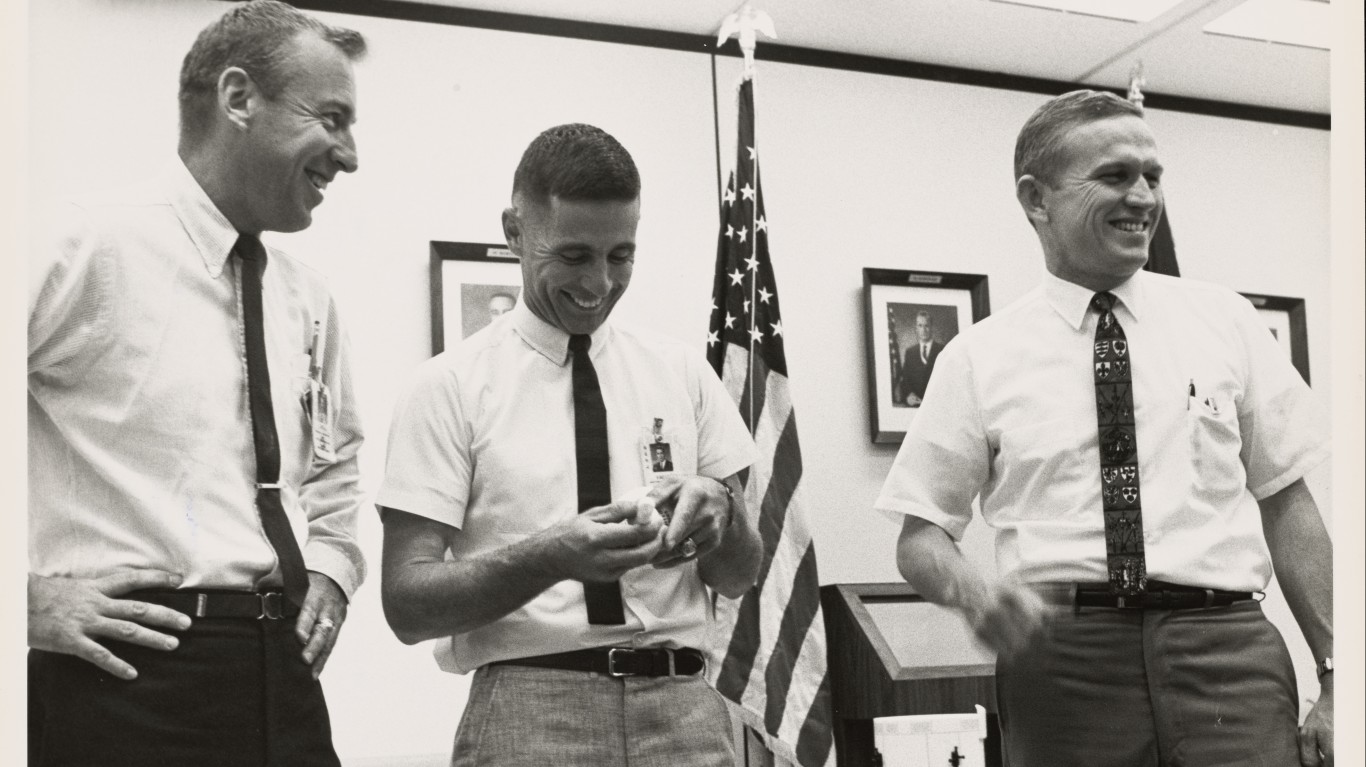
- Actual: $5.2 billion
- Inflation Adjusted: $53 billion
The two astronauts were both on an annual salary. Niel Armstrong’s salary was $30,054 per year. With an inflation adjustment, he made $257,579.98. Present day, the highest-paid civilian astronauts’ salary ranges from $104,898- $161,141 per year. They also get health care benefits, travel, paid holidays, and paid leave.
To become an astronaut, the basic requirements today are a Master’s Degree in a STEM field, 1,000 hours of jet flight, completion of a test pilot program, and passing the NASA astronaut physical. The acceptance rate for NASA Astronauts is 0.08%.
The “Group 6 Astronauts,” the group of astronauts that included the Apollo 11 mission had slightly different requirements. Some of them were a maximum of 6 feet tall, had to have a Master’s or Doctorate, meet the physical requirements for pilots, and were a US citizen.
Two space centers were built to support the Apollo Project: the Kennedy Space Center and the Johnson Space Center. Beyond being a place that launches rockets, and has a visitor center, The Kennedy Space Center is also a wildlife sanctuary. Because it is located in the Merritt Island Wildlife Refuge, it hosts the highest number of endangered species in one place in the United States. A special crew clears the runway of sunning alligators before anything takes off.
#8 Robotic Lunar Program
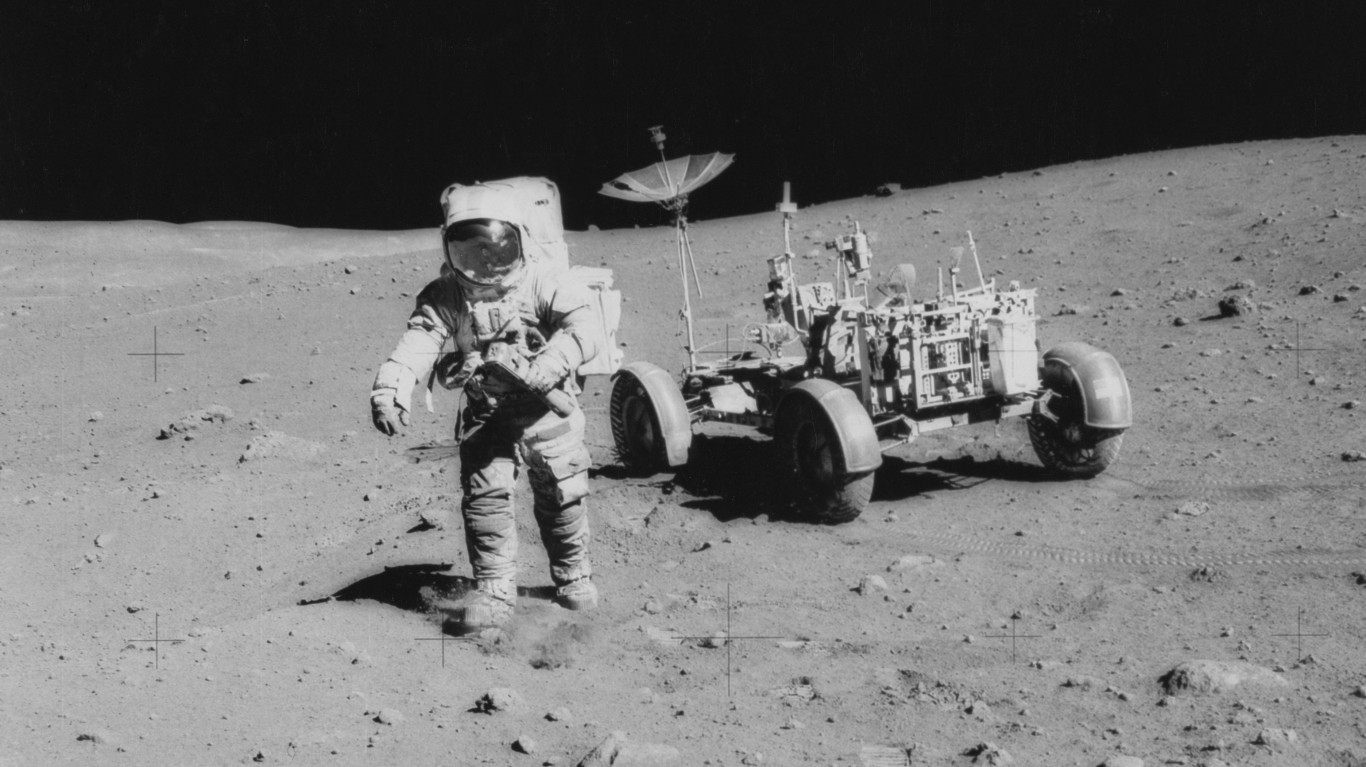
- Actual: $907 million
- Inflation Adjusted: $10 billion
The Lunar Roving Vehicle (LRV) was designed to be able to withstand the low gravity of the moon as well as the rough surface. It was an electric vehicle, and three of them were taken to the moon on various missions. It weighed 210 kg and could hold a payload of 490 kg. The frame was made from aluminum alloy tubing and was hinged in the center so it could fold up to be easier to transport. It took 17 months to develop and had no major anomalies while it was on the moon.
The robotic lunar program introduced some technology that we are still using and developing today. Normal tires couldn’t withstand the surface of the moon due to the lava rocks, lack of gravity, extreme temperature swings, and unfiltered sunlight. Hitting a rock or making too sharp of a turn on the moon with the tires of the time would send the lunar craft flying into space.
The Lunar Roving Vehicle had airless woven steel wire tires. It wasn’t until 2007 that Vivake Asnani, an aerospace technologist decided to update the Apollo tires. When the moon program was canceled in 2009, he partnered with Goodyear, and the steel wire was replaced with nickel-titanium shape memory alloy. This design could be used to produce Earth tires that would never go flat. Other technologies created during the Apollo Program are fireproof material, cooling suits, Dustbuster cordless vacuums, studless winter tires, anti-fog goggles, Nike Air running shoes, and freeze-dried foods.
#9 Project Gemini

- Actual: $1.3 billion
- Inflation Adjusted: $14 billion
The Gemini Project preceded the Apollo Project and gave the U.S. a head start to the moon. The Gemini spacecraft held a crew of 2 and a total of ten Gemini Missions were flown from 1965-1966. It was named “Gemini,” after the constellation because it could hold 2 people. It used a Titan II Launch Vehicle, which was originally a missile.
Some achievements of the Gemini missions were the first U.S. spacewalk, staying more than a week in orbit, two spacecraft meeting in orbit, connecting two spacecraft in orbit, and flying higher than any previous NASA mission.
The first American to walk in space was Ed White. He went up in the Gemini Capsule on June 3, 1965, on the Gemini 4 mission. The flight took 4 days and happened almost 3 months after the Soviets accomplished their spacewalk.
While on his walk, White said, “This is the greatest experience, it’s just tremendous. Right now, I’m standing on my head and I’m looking right down, and it looks like we’re coming up on the coast of California. There is absolutely no disorientation associated with it.” When he was commanded to go back into the capsule, he referred to that as “the saddest moment of my life.”
Their 23-minute spacewalk brought hope to the country and helped Americans feel excitement and optimism over the space program. Ed White was selected to be part of the first Apollo mission. He was joined by two other astronauts, Gus Grissom and Roger Chaffee. The crew performed a dry test on the launch pad and entered the Apollo I Command Module on the launch pad. The communication system wasn’t working properly, and a minute into the test, “Flames!” was heard over the communication system. Because the capsule was filled with pure oxygen which enabled the fire to fill the capsule within seconds. Unfortunately, all three astronauts lost their lives. Because of this tragic incident, Fireproof material was developed. Firefighters globally use that material for their uniforms, and from that point on, every astronaut uniform has been fire-proof.
#10 Total Lunar Effort
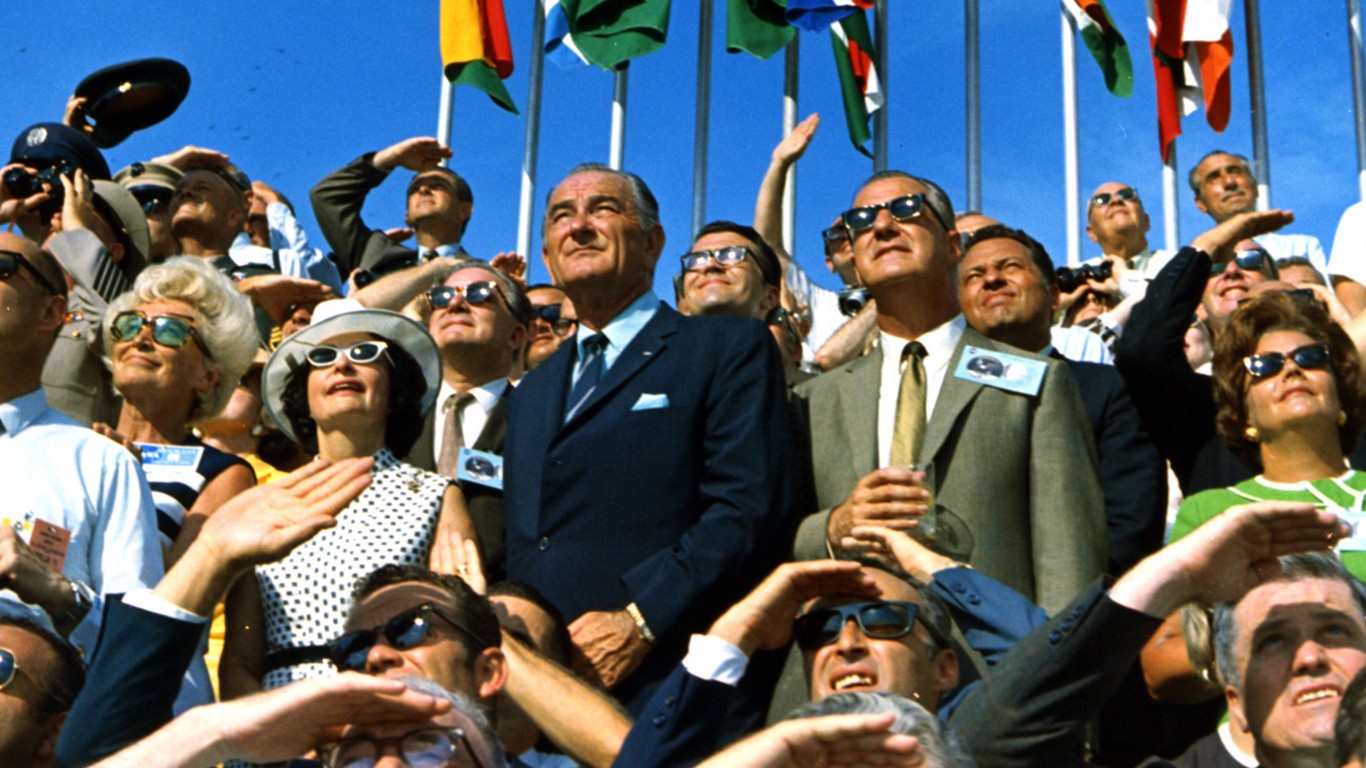
- Actual: $28 billion
- Inflation Adjusted: $280 billion
In addition to the Apollo Program, the total lunar effort refers to Projects Mercury, Gemini, Skylab, Artemis, and robotic missions. Something that the Apollo program accomplished was to bring back moon samples. The Apollo Program brought rock and soil that weighed around 842 pounds altogether.
All of those samples were taken to the Lunar Receiving Laboratory. Because there were fears that the samples could bring back harmful microorganisms. The Lunar Receiving Lab was built to isolate the astronauts and samples after they returned from space. It was also important to protect the samples from earthly contaminants. The Crew Reception Area (CRA) and Sample Operations Area are contained within a biological barrier with a complex vacuum system so air can’t escape from the facility, and outside air can’t enter the facility.
When the astronauts returned, they stayed in the CRA dormitories, for 21 days of quarantine. The Apollo Command Module was also held there during the quarantine period. There was also a glass-walled room for debriefings and press conferences, a gas analysis lab, a vacuum lab, a physical sciences test lab, a radiation counting lab, and a biological sciences test lab. Some of the state-of-the-art equipment included a gamma ray and vacuum gloveboxes. The three astronauts were declared medically fit and infection-free after the quarantine period to be released back to their families
After the Apollo missions ended, a lot of the equipment was transferred to the Atomic Energy Commission’s laboratory in Los Alamos, where it was used to create the Atomic Bomb. The only equipment that remained was the gas analysis and radiation counting laboratories. The LRL was renamed to Building 37, and the lunar samples along with the essential research functions were relocated to the Lunar Sample Curatorial Facility to Building 31.
Thank you for reading! Have some feedback for us?
Contact the 24/7 Wall St. editorial team.
